
News |
- Southern Chiefs Seek Federal Hydro Review
- St. Joseph's No Longer Largest Wind Project
- CEC to Study Transportation Impacts
- Wild 9 Calls on Copenhagen to Protect Land
- Red List Indicates Extinction Crisis
- Norway House Cree Call for CRD Review
- Canada Missing 130 Million Pacific Salmon
- Obama Funds Smart Grid $3.4 Billion
- Environmentalism A Belief British Courts Say
- US Tribes Pass Hydro Resolutions
- First Nations Water Rights Crisis
- US Water Use Low, Trends Worrisome
| Southern Chiefs Seek Federal Hydro Review | 26 November 09 |
 The Southern Chiefs Organization (SCO), representing thirty-six First Nation communities in southern Manitoba, are urging the federal and provincial crowns to do an independent environmental audit of Manitoba Hydro practices because of rising concerns about both flooding and erosion impacting communities. The Southern Chiefs Organization (SCO), representing thirty-six First Nation communities in southern Manitoba, are urging the federal and provincial crowns to do an independent environmental audit of Manitoba Hydro practices because of rising concerns about both flooding and erosion impacting communities.The SCO says that 26 First Nations communities are concerned about flooding and that every year flooding is getting worse, destroying shoreline and damaging property. This spring alone, 296 houses were impacted. The SCO want Manitoba Hydro held responsible for the destruction. Manitoba Hydro says there is no basis for the complaint and that lake levels have not changed since hydro started regulating them. View November 20, 2009 CBC News articleView November 21, 2009 Winnipeg Free Press article View November 19, 2009 SCO resolutions- Environmental Audit (PDF) Sources: CBC, Canadian Press |
|
 Print version Print version |
Top |
| St. Joseph's No Longer Largest Wind Project | 25 November 09 |
 At a November 2009 Manitoba Legislature crown corporations committee hearing Manitoba Hydro announced the proposed St. Joseph's wind project will be less than half its original size. At a November 2009 Manitoba Legislature crown corporations committee hearing Manitoba Hydro announced the proposed St. Joseph's wind project will be less than half its original size.After a year long delay due to financial problems with the parent company Babcock and Brown, the Pattern Energy owned St. Joseph's wind project is going to produce only 138 megawatts of energy compared to the 300 megawatts originally planned. St. Joseph's wind project was going to be the largest wind project in Canada and decrease in size will affect revenue for municipalities and landowners involved. The decrease in generation also effects Manitoba's goal of reaching 1000 MW of wind energy by 2015, since nine other licensed wind projects have been put on hold. Pattern Energy is apparently looking to the Manitoba Government to subsidize the project, an act not all officials agree with. Manitoba Hydro says the power purchase agreement is almost complete. View Manitoba Legislative Assembly Transcripts for Nov 17, 2009 (PDF)View November 14, 2009 Winnipeg Free Press article View November 18, 2009 Winnipeg Free Press article View November 19, 2009 Steinbach Online.com press release View Manitoba Wildlands' St. Joseph Wind Project webpage Source: Winnipeg Free Press, Steinbach Online, Manitoba Legislative Assembly |
|
 Print version Print version |
Top |
| CEC to Study Transportation Impacts | 23 November 09 |
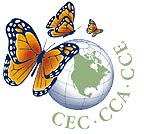 The Commission for Environmental Cooperation (CEC) under NAFTA has commissioned a new study to look at making freight transportation in North America more environmentally sustainable. Currently transportation contributes up to 26 percent of green house gas (GHG) emissions, with a quarter coming from the freight industry. The Commission for Environmental Cooperation (CEC) under NAFTA has commissioned a new study to look at making freight transportation in North America more environmentally sustainable. Currently transportation contributes up to 26 percent of green house gas (GHG) emissions, with a quarter coming from the freight industry. The CEC Secretariat will produce a Sustainable Freight Transportation in North America report through an advisory group with representatives from the transportation industry, non-governmental groups and government agencies. The advisory group will be chaired by President and Vice Chancellor at the University of Winnipeg, Lloyd Axworthy. Mr. Axworthy is also a former Canadian cabinet minister, including responsibility for foreign affairs. The group will study improvements in environmental performance and sustainability for the transport industry and recommend policy changes for the governments of Canada, US, and Mexico. Making improvements to freight transportation to cut GHG emissions, will also help all three countries meet GHE reduction targets. The final report is expected by mid-2010. View November 4, 2009 CEC articleView CEC website View CEC Freight Transportation webpage Sources: Commission for Environmental Cooperation |
|
 Print version Print version |
Top |
| Wild 9 Calls on Copenhagen to Protect Land | 19 November 09 |
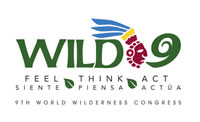 In November 2009, Merida, Mexico hosted the 9th World Wilderness Congress (WILD 9). Wild 9's central theme of wilderness, people and climate change brought over 1500 delegates from 51 countries together and resulted in forty-two targeted resolutions being passed. The Wild 9 resolutions and a special Message from Merida declaration will be sent to the United Nations Framework Convention on Climate Change (UNFCCC) December conference in Copenhagen, Denmark. In November 2009, Merida, Mexico hosted the 9th World Wilderness Congress (WILD 9). Wild 9's central theme of wilderness, people and climate change brought over 1500 delegates from 51 countries together and resulted in forty-two targeted resolutions being passed. The Wild 9 resolutions and a special Message from Merida declaration will be sent to the United Nations Framework Convention on Climate Change (UNFCCC) December conference in Copenhagen, Denmark.Message from Merida declaration outlines an international call for specific policy to integrate wilderness and biodiversity conservation into next global climate change strategy. The declaration states that protection of critical wilderness areas will help combat climate change. The Message from Merida will be collecting signatures from international delegates until the UN Climate Change Conference (COP15) in Copenhagen, December 7th to 18th. To sign the Mensaje de Merida as an organization, please send your logo, name and title to Emily Loose (Emily@wild.org). Individuals are also welcome to sign. Wild 9 resolutions are available for comment on the resolutions website. View November 11, 2009 Mongabay articleView November 17, 2009 IPS article View The Wild Foundation website View Wild 9's Resolutions webpage View Wild 9's Message from Merida View Manitoba Wildlands' International Meetings page for more information Source: Mongabay, The Wild Foundation |
|
 Print version Print version |
Top |
| Red List Indicates Extinction Crisis | 19 November 09 |
 Of the 47,677 species surveyed this year by International Union for Conservation of Nature (IUCN) over a third are at risk. The Red List has 17,291 species at some level of danger and 875 species considered extinct, indicating an extinction crisis. Of the 47,677 species surveyed this year by International Union for Conservation of Nature (IUCN) over a third are at risk. The Red List has 17,291 species at some level of danger and 875 species considered extinct, indicating an extinction crisis.IUCN found that of known species, 30% of amphibians, 21% of mammals, 12% of birds, 28% of reptiles and 70% of plant species are in danger. Every year more species are discovered and examined by IUCN so more are found to be in danger. These numbers are increasing at an alarming rate. IUCN is calling it a "serious extinction crisis", according to Jane Smart, Director of IUCN's Biodiversity Conservation Group. The cause for increase in species loss is habitat loss and changes in land use. IUCN warns the situation may actually be even worse than their numbers show as more species need to be examined. View November 3, 2009 The Economist press releaseView IUCN Red List webpage View November 3, 2009 IUCN press release Source: International Union for Conservation of Nature |
|
 Print version Print version |
Top |
| Norway House Cree Call for CRD Review | 16 November 09 |
 Norway House Cree Nation Chief Marcel Balfour and Council have called on Manitoba to establish a "public, open and transparent process" to review the Lake Winnipeg Regulation and Churchill River Diversion Project (LWRCRDP). Norway House Cree Nation Chief Marcel Balfour and Council have called on Manitoba to establish a "public, open and transparent process" to review the Lake Winnipeg Regulation and Churchill River Diversion Project (LWRCRDP).In 1973, Manitoba Hydro began construction on the LWCRDP for a series of dams to regulate water levels on Lake Winnipeg and divert the Churchill River under an interim licence granted through the Manitoba Water Power Act. Manitoba Hydro now seeks a 50-year final licence for the Churchill River Diversion Project and a separate licensing process for regulation of Lake Winnipeg. Chief Balfour stated "In 1973 Manitoba and Canada said the flooding of our lands were justified to provide power needed of the Province. Today, Manitoba Hydro has a very different focus - maximizing export revenues. We will seek...a system-wide look at how Hydro manages and operates rivers and lakes that supply water to Hydro's dams, and the outstanding issues regarding implementation of the (Northern Flood Agreement) Treaty." View October 30, 2009 Norway House Cree Nation press releaseView Norway House Cree Nation website View November 16, 2009 Marketwire article View Manitoba Wildlands' Churchill River Diversion page for more information Source: StreetInsider.com, Norway House Cree Nation |
|
 Print version Print version |
Top |
| Canada Missing 130 Million Pacific Salmon | 16 November 09 |
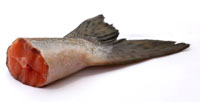 The fishing industry on the Fraser River was devastated fall 2009 when out of 10 million sockeye salmon expected to return, only 1 million showed up. This is the worst return of sockeye salmon ever on the Fraser River and triggered the third year in a row that sockeye salmon fishing has been closed. The fishing industry on the Fraser River was devastated fall 2009 when out of 10 million sockeye salmon expected to return, only 1 million showed up. This is the worst return of sockeye salmon ever on the Fraser River and triggered the third year in a row that sockeye salmon fishing has been closed.Scientists are unsure what is causing the extremely low return rates and uncertainty surrounds the tracking and whereabouts of the rest of the fingerlings from recent years. But on Thursday November, 5 2009 Prime Minister Harper announced the start of a judicial inquiry to look at the declines. The inquiry will be headed by B.C. Supreme Court Justice Bruce Cohen who will examine the cause of the collapse looking at everything from human error and fish farming standards, to environmental disaster. He will report back with recommendations by May 1 2011. View August 13, 2009 CBC News articleView August 15, 2009 Canada.com article View September 7, 2009 Winnipeg Sun article View November 5, 2009 Yahoo Canada article View November 6, 2009 Fis World News Press release View November 6, 2009 BC Local News article View November 6, 2009 Government of Canada Press Release Sources: Globe and Mail, CBC News, Canadian Press, Yahoo News Canada |
|
 Print version Print version |
Top |
| Obama Funds Smart Grid $3.4 Billion | 16 November 09 |
 On October 27, 2009 U.S. President Obama announced $3.4 billion in grants to help the U.S. move towards a smart energy grid. His announcement is part of getting the U.S. on track for Copenhagen. A smart grid is key to renewable energy system and will help cut down on emissions. On October 27, 2009 U.S. President Obama announced $3.4 billion in grants to help the U.S. move towards a smart energy grid. His announcement is part of getting the U.S. on track for Copenhagen. A smart grid is key to renewable energy system and will help cut down on emissions.A smart grid is an electrical power set-up that brings electricity to everyone that needs it and reports back to the utility on how much energy is used. It uses that data to charge you more for electricity used in peak hours and offsets that with discounts for energy use during low demand hours, forcing consumers to save energy. It also takes the strain off the electrical grid and makes it more efficient at supplying the energy needed. A smart grid has less environmental impact overall. The funding Obama promised will help increase the liability, efficiency and security of the US electrical system under the American Recovery and Reinvestment Act. View June 25, 2009 U.S. Department of Energy press releaseView October 29, 2009 Eco Seed press release View National Institute of Standards and Technology webpage View U.S. Department of Energy View 2008 U.S. Government Report: The Smart Grid: An Introduction (PDF) Sources: U.S. Department of Energy, EcoSeed |
|
 Print version Print version |
Top |
| Environmentalism A Belief British Courts Say | 16 November 09 |
 English High Court judge Justice Burton has ruled that green and environmental beliefs deserve the same protection under the law as religious beliefs. The case ruled in favour of Tim Nichloson, head of sustainability for a residential property firm, that was let go from his position because of his environmental beliefs. English High Court judge Justice Burton has ruled that green and environmental beliefs deserve the same protection under the law as religious beliefs. The case ruled in favour of Tim Nichloson, head of sustainability for a residential property firm, that was let go from his position because of his environmental beliefs.Justice Burton stated that a belief in man-made climate change is capable of being a philosophical belief for the purpose of the 2003 Religion and Belief Regulations. This decision will set a precedent for how environmental beliefs are regarded in the future. View November 9, 2009 Economist press releaseView November 3, 2009 Telegraph press release Sources: The Economist, Telegraph Press |
|
 Print version Print version |
Top |
| US Tribes Pass Hydro Resolutions | 10 November 09 |
 In the past two months, both the National Congress of American Indians and the Great Lakes Inter-Tribal Council have passed resolutions calling on the Congress of the United States and Wisconsin, respectively, to recognize and address the environmental impacts of Manitoba Hydro. In the past two months, both the National Congress of American Indians and the Great Lakes Inter-Tribal Council have passed resolutions calling on the Congress of the United States and Wisconsin, respectively, to recognize and address the environmental impacts of Manitoba Hydro. At the 66th Annual Convention of National Congress of American Indians, it was resolved to call on the United States Congress to not benefit large foreign hydro utilities under federal Renewable Energy Standards until such projects have met the approval of National Environmental Policy Act. Similarly, on September 4th 2009, the Great Lakes Inter-Tribal Council passed a resolution calling on the Wisconsin Legislature to enact language related to Manitoba Hydro to ensure that the environmental effects of Manitoba Hydro projects are recognized and addressed. View 2009 Great Lakes InterTribal resolution, Supporting Recommendations of the Government's Task force on Global Warming (PDF)Visit Great Lakes InterTribal website View National Congress of American Indians resolution, Supporting Similar Environmental Requirements for Foreign Hydro Power Under the Federal Renewable Energy Standard (PDF) Visit National Congress of American Indians website Sources: Great Lakes InterTribal, National Congress of American Indians |
|
 Print version Print version |
Top |
| First Nations Water Rights Crisis | 10 November 09 |
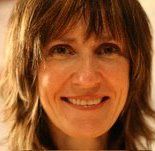 Merrell-Ann Phare launched her new book Denying the Source: The Crisis of First Nations Water Rights (Rocky Mountain Books) on October 27th at Grant Park in Prairie Ink Restaurant, Winnipeg, Manitoba. Merrell-Ann Phare launched her new book Denying the Source: The Crisis of First Nations Water Rights (Rocky Mountain Books) on October 27th at Grant Park in Prairie Ink Restaurant, Winnipeg, Manitoba.First Nations are facing some of the worst water crises in Canada and throughout North America. This book is a call to respect the water rights of First Nations, and through this create a new water ethic in Canada and beyond. "In Denying the Source, Merrell-Ann Phare summarizes the many complex legal and ethical questions that have resulted in the water crisis facing Canada's First Nations. She proposes that only immediate action to develop a new water ethic involving Indigenous Peoples, our waterways, and the watersheds that flow to them, will ensure our freshwater supplies for the future," states David Schindler, Killam Memorial Professor of Ecology at University of Alberta. View October 27, 2009 McNally Robinson book launchView 2009 Merrell-Ann Phare book, Denying the Source: The Crisis of First Nations Water Rights Source: McNally Robinson |
|
 Print version Print version |
Top |
| US Water Use Low, Trends Worrisome | 10 November 09 |
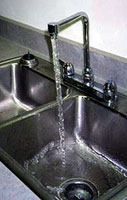 Every 5 years since 1950, the U.S. Geological Survey (USGS) assesses water use in the United States. In the recent report examining 2000-2005, water use per person is lower than its been since the 1950's and total water use is lower than it was in 1975. Every 5 years since 1950, the U.S. Geological Survey (USGS) assesses water use in the United States. In the recent report examining 2000-2005, water use per person is lower than its been since the 1950's and total water use is lower than it was in 1975.Part of the reason for the drop is increased efficient water use by industry (power generation) and irrigation. However, there is a worrying trend in parts of the US, such as the Southwest and Southeast States, where water is scarce, and demand is growing, according to Dr. Peter Gleick, President and Co-founder of the Pacific Institute. Populations in these areas are continuing to grow, adding to water competition. Experts are warning that the efficient water use trend needs to continue or water availability will decrease. View October 29, 2009 Circle of Blue press releaseView 2009 USGS report, Estimated Use of Water in the United States in 2005 (PDF) Visit USGS Water Use website View October 30, 2009 American Water Works Association press release Sources: USGS, Circle of Blue News |
|
 Print version Print version |
Top |


 RSS Feeds:
RSS Feeds: